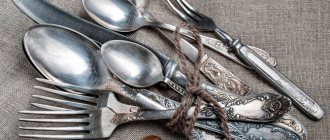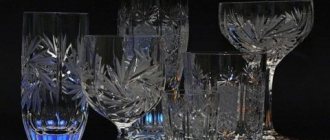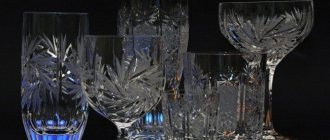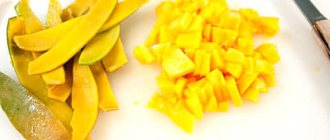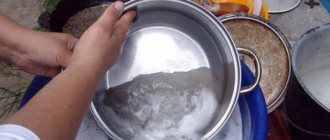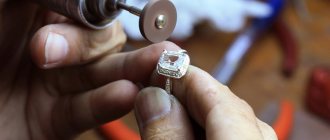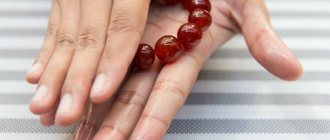Natural stone has a unique texture that can decorate any architectural element (floor and wall coverings, fountains, steps and balusters of stairs, statues and tombstones, flowerpots, etc.). In order for it to be pleasing to the eye, it must be shown. Since ancient times, grinding and polishing of natural stone has been used for this purpose. These operations gave the coatings a special, ceremonial look. Special machines and tools help ensure high-quality processing. To select them correctly, you need to know the features of the technology and the capabilities of the equipment.
What is stone grinding and polishing?
Grinding is the processing of stone mechanically using abrasive or diamond tools. It is necessary to level the surface, remove defects (scratches, dents, cracks, etc.), and eliminate installation defects. After this procedure, the surface becomes smooth, but with a certain degree of roughness.
Polishing is a finishing process using mechanical and chemical methods to obtain a smooth surface. After this operation, the mirror shine of the stone appears. Its specific texture and texture (color shades, tints, veins) appear. Polishing not only provides an aesthetic appearance, but also increases the material’s resistance to contamination, aggressive substances, and mechanical abrasion.
Preparatory work
Assess the complexity of the work that needs to be done. Find all problem areas, defects and cracks.
There will be a lot of dust during the process: cover and otherwise isolate other rooms and objects in them from the upcoming dust. Use the vacuum cleaner effectively.
Granite grinding: technological process
The essence of grinding is to remove cracks, chips and other defects. The top part of the stone is removed, exposing its structure and porosity. After sanding is completed, abrasive pastes and polishes are used to restore shine and solidity.
The process of grinding granite on a machine step by step
Granite has high hardness; in industrial conditions, a special polishing machine is used. If you need to clean a small area, use angle grinders and the grinder itself.
Ushm is an angle grinder; in common people such devices are called grinders. Used for grinding metal, stone, and construction work.
If you need to grind a large stone surface, you need a tool with a power of 1200 W. For a one-time procedure, construction models with standard power are suitable, but for larger volumes, such as polishing floor tiles, you cannot do without specialized equipment.
Grinding is performed with special polishing cups for granite of different grain sizes and sizes. The sequence of using the necessary tools when grinding granite with your own hands - video
Consider a few points:
- Wear a respirator and goggles: dust and small stone fragments may get into your mouth, nose or eyes. The feeling is not pleasant.
- Do not press on the tool; its own weight and fast rotations are enough to remove a small layer. Avoid sudden movements to avoid damaging the stone base.
- There is no need for a speed control function; the angle grinder is powerful and has high speeds.
You have sanded the surface and removed a layer of up to 3 mm. This is a rough grind designed to level the surface. Afterwards, you need to re-joint the joints, and then seal them with special putties in the color of marble or granite. The solidity of the surface is recreated in this way.
Polishing marble and granite
The surface is clean, free of dust, grease and dirt. As a rule, polishing is not carried out separately from grinding. If there are cracks, gouges and chips on the surface, we first need to eliminate these defects, after which we proceed to polishing.
Granite polishing is divided into two types of work:
- cleaning the surface with diamond discs of different grain sizes;
- the use of special polishes and abrasive pastes.
You will need a small grinder with the ability to set the speed. Diamond blades for angle grinders are needed with 100, 200, 400 grit values. You need to start working with granite with 50, after which you move to a smaller grain size: 100, 200.
Marble is a material that requires careful polishing; the work is completed on an 800 disc, which is explained by the lower hardness of the stone. With granite it is more difficult - shine can be achieved using polishing wheels 1500 and 3000.
Small surfaces are finally rubbed with felt cloth and polishes. It is recommended to use polymer products rather than wax coating, as they are more durable.
Equipment and tools
For stone processing, workshops and workshops use special grinding and polishing rotary machines. Natural stone has high hardness, which requires the use of high-power equipment. A 2.2 kW stone grinding machine, a 5.5 kW/380V knee-lever type grinding and polishing machine, and a bridge type polishing machine have proven themselves.
Lever grinding and polishing machine “Blesk” (Gantelstan, Russia)
A special grinding tool helps ensure high-quality processing:
1. Fickerts. These are special abrasive plates with a diamond layer that have a dovetail fastening.
Fickerts
2. Frankfurt. Diamond and abrasive attachments are used, mounted on a rotating disk.
Frankfurt
3. Stone cutters. Used for primary processing. Bakelite, synthetic and diamond cutters of cylindrical and cone shape are used. Grit size - from No. 16 to No. 500.
Sharoshki
4. Veils. These are face grinding wheels for toggle machines. Metal, organic, plastic and rubber veils are used. For particularly important elements, diamond-coated wheels are used.
Diamond end mills (DAF)
5. Diamond flexible grinding wheels (AGShK) - “turtles”. They can have a diameter of 50, 80, 100, 115 and 125 mm. The fraction of diamond chips is determined by number (30-3000 and BUFF).
Diamond flexible grinding wheels (AGShK) or “turtles”
6. Diamond grinding wheels (ADG) - diamond “cups”. Standard sizes: 50-100, 125-180 and 208 mm. Can be attached to angle grinders.
Diamond grinding wheels (AShK)
7. Diamond grinding sponges. They are used for manual finishing of the surface when processing in hard-to-reach places, for processing edges, small parts and for removing chips after mechanical impact. Popular sponges are Diam-S and KGS.
8. Brushes. Abrasive and diamond brushes are used for aging and brushing the surface of the stone.
9. Diamond skins. They have different grain sizes and are used for manual finishing of the process.
10. Felt for polishing. Polishing wheels of different diameters are formed from it. The following varieties are used: fine-wool, semi-coarse-wool and coarse-wool felt to provide different degrees of processing.
Felt polishing wheels
Important! Abrasive grinding stones and other specified tools can be mounted on the working part of special machines or on the shaft of household power tools (grinder, electric drill). Fine finishing can be done manually.
Processing stones at home
It all starts with searching for a stone. These can be both minerals and ore rocks. Jasper, agate, crystal brushes and flint received special attention. But this is just the beginning. Next comes processing, during which the stone is cut with cutting discs, which can be found in any diamond tool store. Hobbyists prefer discs with a diameter of 125 to 200 mm and use them on a motor with a power of 150-200 watts via a belt drive. After cutting, it is important to cool the blade on both sides.
Making a machine for processing stones at home
It is not difficult to make a machine for cutting stone in simple conditions. If you look at the design, you can easily understand where the cooling is supplied and where which parts will be located.
Grinding rules
Grinding stones to create flat plates can be done even on simple glass using abrasive powders.
You should spray the glass and apply a little powder and you are ready to start. When grinding, the powder is added little by little as the abrasive wears out, and water is needed to maintain the creamy mass. When, when grinding, you move from a coarser powder to a fine one (by fraction), the stone, glass and hands should be washed well with soap and a brush: if even a little powder of a larger fraction gets into the powder of a smaller fraction, everything will be ruined.
When the stone is ground, it should be polished on a felt/felt mechanical wheel, the diameter of which should be between 140 and 200 mm. During the polishing process, chromium oxide powder and water should be used. The rotation of the circle should reach a speed of 410 to 700 rpm.
Recommendations
This is just one way of processing, although in reality there are many more. For those who have fallen in love with manual processing of stones at home, we would like to offer an excellent design of a machine for processing small stones. Since the scheme is extremely simple, we will only give recommendations.
- We suggest using electric motors for a washing machine as a motor - they are usually single-phase, the power ranges from 190 to 240 watts and they can reach up to 1300 rpm. With such engine characteristics, two-stage pulleys with gear ratios of 1:1 and 1:0.35 can be used.
- The first gear is ideal for processing on faceplates with fixed abrasive material, but the second will be used for processing with loose abrasive.
- Use the V-belt from the Zaporozhets car as a gear shifter. You can make the fastening thread both left and right, the main thing is that when working with a load, the faceplate does not move off the axis.
- The trough for collecting slag should be at least 2 times larger than the diameter of the faceplate, the same applies to the height of the sides. You can attach rubber to the sides of the trough so that if the stone falls out of your hands, it will not break.
- Since all processing is carried out using water, we will need a dropper. The problem is that it is only used when working on a faceplate with a fixed abrasive. When using bulk abrasive, it is better to wet the stone in a separate bath, the availability of which should be taken care of in advance.
- And, of course, you should have not just one faceplate, but a whole set: wooden, cast iron, metal with felt and felt attached. This is required for various stages of processing and polishing.
Dry cleaning
Dry cleaning can be used to remove surface deposits. Its advantages are that the samples practically do not suffer from chips and scratches. When processing stone at home, you can use a 5-15% solution of oxalic/hydrochloric acid.
Important: Before using these acids, make sure that the minerals being treated are not soluble in it. Aragonite and azurite cannot be treated with acid.
When processing lapis lazuli and turquoise, you should be careful, since they, although slowly, also dissolve. To soften organic residues, stones are soaked in acetic acid. Fat compounds are easily removed with acetone and gasoline.
Some household chemicals are highly effective for dry cleaning, for example, Antikipin, which perfectly removes carbonate limescale shells from minerals. For hard-to-reach areas, use Progress detergent. In the final stages of processing, chemical minerals can be cleaned with glass and crystal cleaners.
The effect will also be from a “chemical bath”, i.e. you boil the mineral in a pressure cooker. Thanks to this technique, steam will penetrate even into places inaccessible to humans. After processing, the stones should be rinsed well under running water.
Cutting and splitting
Stones that have already been washed and cleaned should be sorted.
Some people only collect beautiful specimens or fossils, rare species. Most subjects all found material to grinding and polishing, which helps to reveal the beauty of the stones, and people experienced in this matter sometimes find planes in the sand that, when cut, reveal a picture of play of colors, bizarre landscapes and even portraits. As a result, some people simply collect stones, while others use them for crafts, combining them with wood and metal.
But before you start, you should split the stone and remove the excess. For this process (preparation), we will make a special device that will help in working with large samples. We will need a clamp with two teeth made of hardened metal (alternatively, use a vice in which 2 corners with teeth made of pobedit will be mounted).
The stone should be cut with diamond wheels or saws
The grinding and cutting machine can be made on the basis of an electric drilling device or an EZS-1 sharpener. In this case we will have 2 shaft outputs, one of which will have a 6 chuck and the other an emery wheel or a diamond coated wheel. The power of such a device will be 250 watts, and the rotation speed
Grinding technology
Depending on the workpiece, coarse or fine grinding can be performed. For example, for building blocks, stair steps, rough paving stones. The entire stone grinding process can be divided into the following stages:
- Alignment of ends. It is necessary to give the slabs or blocks the correct geometric shape. An even cut is formed, all irregularities remaining after cutting the stone are removed.
- Rough processing. Most often, it is necessary to remove a thick layer, and therefore water cooling of the working area is used. When working, an abrasive is used to grind the coarsest grain size. Additional coarse quartz sand can be applied to the surface. With this treatment, steps are eliminated at the junction of slabs (blocks), large defects are removed, and the curved surface is leveled. Typically, discs of the largest diameter (more than 100 mm) are installed.
- Finish grinding. During this process, nozzles and tools with fine abrasive grains are installed. Processing is carried out in several stages with the transition from coarse-grained to fine-grained abrasive (diamond coating). The pressure on the surface of the stone gradually decreases. After finishing sanding, a flat, smooth surface should be formed, but with a matte finish.
When grinding, it is important to choose the correct abrasive number. Recommendations for selection are given in the table.
| Selecting the abrasive fraction of the grinding tool | ||
| № | Defect size, mm | Abrasive fraction |
| 1 | up to 1.5 | 80–100 |
| 2 | 1,5–5 | 40–60 |
| 3 | more than 5 | 30–40 |
Reference! When sanding, it is important to remember that a large amount of dust is generated. When working, you must use protective equipment - goggles, a respirator, gloves, closed clothing.
Do-it-yourself natural stone processing
Different tools for processing workpieces at home can be used, depending on the characteristics of the material being processed:
- for soft rocks, those designed for working on metal will be sufficient
- for durable ones, special ones will be required
Certain requirements are also imposed on the organization of the production process; it is especially important to ensure uninterrupted operation of exhaust ventilation, because harmful dust is generated during the cutting or grinding process.
At home you can produce:
- cutting
- polishing
- grinding
- engraving
Grinding stone at home
Cutting and grinding can only be carried out if a continuous water supply can be provided.
Running water accelerates the cooling of the cutting element, removes the resulting sludge and reduces the amount of harmful dust.
Rough cutting is performed with a grinder using a stone cutting disc. If a more accurate result is required, use a sawmill with a metal movable platform.
To carry out grinding, use a grinder with special grinding wheels or a grinding machine.
If the stones are small, about 20-25 cm in diameter, then the following method can be used:
- a cast iron plate is covered with abrasive material
- watered
- rub the stone until its surface acquires the required shape: surface structure
- The cast iron is fine-grained, which allows you to achieve the desired result relatively quickly.
The surface is polished on special polishing wheels using GOI paste.
Engraving is a job that requires great precision and requires the use of a set of stone cutters and a hammer. To polish the engraved surface, use an electric drill with appropriate attachments.
Polishing technology
The final finishing of the stone is achieved by polishing. This operation is carried out in the following order:
- Moistening the material. The entire surface is wetted with water from a spray bottle.
- Primary processing. At the first stage, rough marks left after sanding are removed. Tool No. 50 is installed with a gradual transition to No. 100. As a result, all visible defects should disappear.
- Second stage of smoothing. It starts with installing a nozzle No. 200, moving to No. 400, and then No. 800. The smoothness increases significantly, the structure of the stone appears, but the surface remains matte. The shine begins to appear at the final stage when processed with nozzle No. P1500.
- Final polishing. Machining is completed with P3000 and Buff attachments. The shine appears more clearly. Final polishing and consolidation of the result is achieved by using diamond glass polishing paste. When processing soft minerals (including marble), it is recommended to use wax to polish the stone. These compositions are evenly distributed over the surface using felt circles at a minimum rotation speed.
Important! The final polishing is done by hand. The master achieves a uniform texture of the stone and a shiny surface. Hard-to-reach places and small parts are handled carefully.
Surface treatment
If the mineral has an attractive shape and shines from polishing, then it’s time to start coating the stone with a special protective and decorative agent. In a specialty store you can find a wide range of products that have various effects (highlighting the structure of a mineral or creating a “wet look”). It is worth noting that in this case the economic side of the issue must be excluded, since an incorrectly selected product will reduce all efforts to zero.
Important! Before purchasing a product, you need to study its composition, because some components can enter into a chemical reaction with the mineral, ruining its structure or surface.
Marble grinding and polishing
Processing marble requires a special approach. This material is durable and beautiful, but has increased porosity, and, therefore, stains quickly appear on its surface. To prevent this, protection is required. Marble can only be polished after complete polishing. In this case, diamond polishing paste and other special compounds must be used. Our machines are well suited for grinding and polishing marble.
Crystallization of marble surface
The water absorption of marble can be reduced by its crystallization, i.e. surface treatment with a special acid-based substance after polishing. The mineral reacts with it and a protective film is formed. Before the crystallization procedure, the surface of the marble is thoroughly cleaned of stubborn stains and dried.
CRISTALLINE ADRIA powder, base composition AKEMI, AK1, powder for CRISTALLO marble are used as a crystallizer. The powder is pre-mixed with water. The crystallizer is carefully and evenly applied to the entire marble surface. Distribution is carried out using metallized felt. The surface is covered with a polymer film for 40-48 hours. After crystallization is complete, the composition is thoroughly washed off. It is important to remember that it contains acid and can cause skin burns. When working it is necessary to use protective equipment.
Caring for marble surfaces
Crystallization of marble protects it for 1.5–2 years. After this, the stone begins to fade and loses its former attractiveness. To preserve it, it is necessary to regularly clean the surface. It is recommended to wash the coating with detergents intended for dishes. To remove stains, you can use an aqueous solution of baking soda (45-50 g per 1 liter of water).
If the protective properties are lost, new polishing should be carried out. To do this, first a fine polishing is carried out using a machine with a felt disc. Then, it is recommended to apply silicone sealant (Tytan Professional, Silirub MA, Lugato Marmor + Granit, KRASS). After impregnating the surface with it, after 20-25 minutes you should apply the crystallizer paste AKEMI, AK2 for 15-20 minutes. The surface is wiped dry and left to dry for 7-8 hours. This treatment is recommended once every 2 years.
Preliminary preparation
Before starting work, you should check the softness of the stone to see if it is suitable for polishing. To do this, take a pocket knife and try to carefully scratch the surface. If there is a white mark left or a grainy mark, the stone is not suitable for work; polishing will make it loose. If there is a shiny mark left, the stone is hard and you can work with it.
When checking, you must hold the knife away from you and do not press it too hard - it may slip.
If it is necessary to polish a found stone, first it is given the desired shape using a chisel and hammer. If the stone is large, with large ridges, the ridges will need to be chipped away. At the end, you need to rinse it and remove all dirt.
Source ratatum.com
Granite grinding and polishing
Granite grinding is done on machines or using grinder attachments at home. The process is carried out in a standard manner (rough and rough processing, fine grinding). The final stage is polishing. In workshops, it should be carried out on a special machine for polishing granite using moisture. AShK (“turtles”) are used as nozzles.
Water when polishing granite
Granite polishing is done with water cooling. Water is sprayed into the work area using a spray bottle. It not only cools the instrument, but also deposits dust. Polishing begins with wheels No. 50 and 100. Then, “turtles” No. 200, 400, and so on up to 3000 are installed one by one. To achieve various effects, polishing pastes based on chromium, aluminum, iron, tin or calcium are used. Chromium paste changes color.
Crystallization of granite
Crystallization of granite is a chemical process that involves a special substance containing calcium. As a result, a protective film is formed and micropores are filled. The surface density of the material increases. Powder and liquid crystallizers are used, which differ in composition from those used for marble. This procedure should be entrusted to professionals who have the appropriate equipment and chemical reagents.
Care of granite surfaces
Granite surfaces require, although not complicated, regular maintenance. First of all, timely cleaning is carried out. Dirt can be cleaned with ordinary detergents. To maintain shine, granite is rubbed with wax polishes. Particular attention is paid to traces of mold, lime and cement mortar. If they are detected, immediate action must be taken using strong solvents.
It is recommended to regularly treat granite coating with a special soap to protect the granite. A film is formed that protects dirt from penetrating deep into the surface. The finish on the outside of the wall should be impregnated with special compounds. You can use modern products with silicone and wax. Significant defects should be filled with an acrylic-based composition.
Necessary equipment
In order to return the mineral to its attractive appearance, you need to prepare the following means:
- Sand.
- Grinding wheels.
- Special chemicals.
- Polishing wheels.
- Soft fabric.
- Sandpaper with different grits.
The stone restoration process includes the steps described below. To return the mineral to its original appearance, you need to carry out all the procedures described in the order in which they are presented.
Features of polishing other natural stones
The technology of grinding and polishing different types of stone can vary significantly, which is due to their different density, fragility, and porosity. When processing hard stones, diamond attachments and water cooling are required. For soft minerals, polymer and rubber discs can be used. The choice of abrasive according to grain size is also determined by the hardness of the material. In some cases, when polishing, a resin compound is used - a special resin.
Some color shades also require a special approach. Thus, to ensure a rich black color, it is recommended to use brushes for artificial aging. When polishing agglomerates, special pastes are required. Crystallizers are effective in protecting travertine, limestone, onyx, shell rock and spar.
Grinding and polishing natural stone gives it an attractive appearance. These operations can be carried out with your own hands using ordinary power tools. However, the quality and durability of stone coatings can only be ensured on special machines equipped with professional tools. In specialized shops and workshops, not only high-quality processing is provided, but also reliable protection of polished surfaces.
Do-it-yourself sawing and stabbing
Processing precious and semi-precious stones is a compromise between two aspirations. On the one hand, it is necessary to maintain the maximum size and weight of the finished product, on the other hand, it is necessary to give it an ideal shape or cut, taking into account the structure and quality of the material. Based on these conditions, specialists involved in stone processing determine the required size and shape of the workpieces.
To split a piece of rock , you can use special devices, for example, a clamp with two teeth made of hardened metal. To split large pieces, you can drill holes or make a notch along the edge of the chip and successively punch the cut line using wedges and a hammer.
To cut rock yourself , you can buy a ready-made machine or assemble your own, for example, based on an electric drilling device, equipping it with a continuous water supply system. As such, you can use a moistened sponge or foam rubber, if you hold it with your left hand while cutting. However, to comply with safety precautions, it is better to use both hands during work, so under the workbench with a homemade machine, you can place a tray with water, which will cool the cutting saw blade.
If there are cracks in the sample that needs to be cut, they need to be sealed with epoxy glue for greater strength. This technology allows you to avoid unwanted splits of the material during the sawing process. Before pouring glue into the cracks, the stone must be heated on an electric stove so that the moisture evaporates. When the mineral has cooled to 60 ℃, you can apply glue, trying to ensure that it penetrates deeper into the fracture. When the glue dries, proceed to cutting.
After the raw materials are cut into pieces, they are sent for peeling, during which the workpieces acquire approximate sizes and shapes. For this purpose, coarse-grained grinding wheels are used.
Stone cleaning
Over time, the pores of the stone become clogged with dust. In the case of kitchen countertops, the stone becomes covered with plaque. To prevent the abrasive disc from becoming clogged with dirt when grinding, it is recommended to clean the surface before work.
There are special means for this. Thus, large manufacturers of stone chemicals, such as TENAX and Aisbo, supply branded cleaners to the market. The latter are of three types: acidic, alkaline and neutral. The choice of the necessary product will depend on the type of stone, as well as the degree of contamination. For example, cleaning a marble surface with an acidic and alkaline solution will be detrimental to it, because... acids and alkalis, penetrating into the pores of marble, actively interact with calcium, destroying the stone.
To clean marble surfaces, we recommend using a neutral cleaner, such as Bravo Pavimenti from TENAX. In the case of granite stone, an alkaline cleaner called Bravo Marmo Spray from the same company is suitable.

